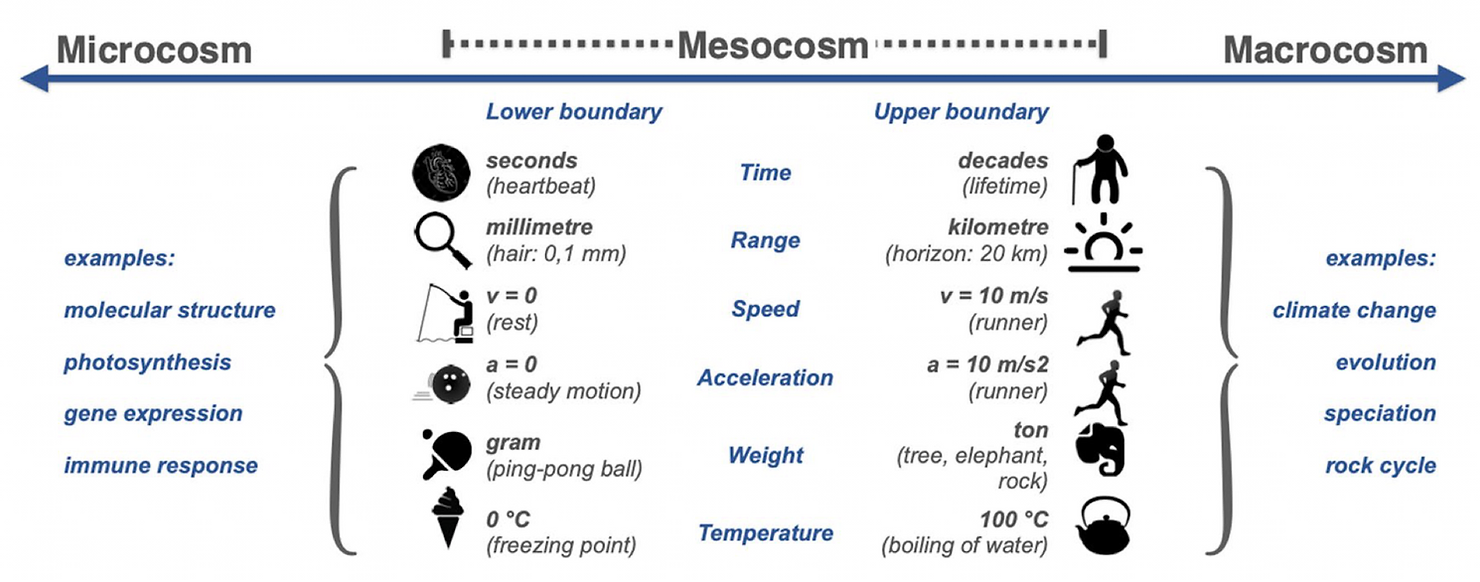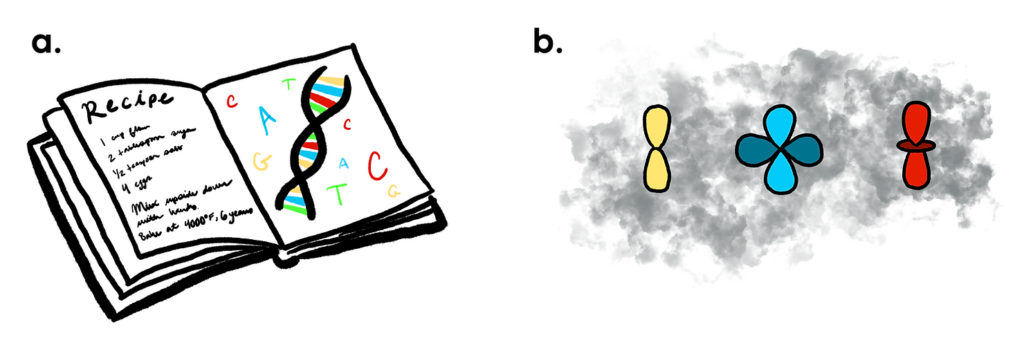Stuck to your memory like gum on a shoe: How analogies can boost science education
Written By Caroline Cencer
Title: Improving University Life Science Instruction with Analogies: Insights from a Course for Graduate Teaching Assistants
Author(s) and Year: Sara Petchey, David Treagust, and Kai Niebert; 2023
Journal: CBE Life Sciences Education (open accèss)
TL;DR: The University of Zurich created a course for graduate student teaching assistants centered around designing analogies for higher science education. They found that the best analogies are those that bridge abstract concepts to physical objects or common experiences. Notably, the more distant the two components of the analogy are, the more thinking is involved to find the connection, which makes the analogy more memorable and effective.
Why I chose this paper: As a scientist, I utilize analogies every day to break down my project results to others. I chose this article to learn more about the model of an “ideal analogy” and whether the use of analogies has been proven to be an effective science communication tool.
Introduction
If there’s one phrase we can all recall from middle school science class, it’s “the mitochondria is the powerhouse of the cell.” Even those who are not in science classes or careers still remember this analogy and can infer that the mitochondria’s role is to provide energy for cell functions. But why does this saying stick like glue to our memory? Research into the use of analogies and metaphors to teach difficult science topics goes back decades, suggesting that analogies “make new information more concrete and easier to imagine.” At their core, analogies involve bridging new knowledge (the target) to familiar experiences or references (the analogue). The result is hopefully a more understandable and relatable concept.
The Question
Given that complex and abstract topics predominate much of science education, Petchey and colleagues wanted to study the use of analogies as an effective tool for graduate student instructors to help students make concrete connections to what they were learning. Their past research suggests that scientists with little background in teaching appreciate having structured educational tools to utilize. Knowing this, Petchey and colleagues developed a guide to creating effective analogies for graduate student instructors. They wanted to determine if this guide, in the context of a course module, could influence graduate students’ use of analogies in their teaching.
The Method
Recognizing the proven usefulness of analogies in middle school science education, the Institute of Education at the University of Zurich, Switzerland, in partnership with the School of Education at Curtin University, Australia, banded together to create a teaching module devoted to using analogies in higher education. The course, titled “Teaching Science at University” (TSU), led a total of 75 University of Zurich graduate teaching assistants from 2018-2021 in developing analogies to link abstract science concepts to comparisons that their undergraduate students could better relate to. This study population was balanced in gender and included a variety of science backgrounds. The course participants had little experience as teaching assistants and essentially no teacher education before taking the TSU course. All of the participants had a goal to be successful research scientists and perform well when teaching undergraduate classes and laboratories.
Participants completed a number of modules throughout the course, each followed by an assignment. The participants’ analogy assignment responses were anonymized and analyzed by coding participants’ created analogies and putting them into categories (e.g. near vs. far analogy), the manual of which is available online.
Results
First, participants were asked to identify science topics that their students may deem hard to understand and then use those topics as the targets within their analogies. The majority of the identified topics were microscopic in scale, the size of cells or molecules. The rest of the topics fell into the macroscopic, at a population or global scale, or the mesoscopic, at the visible scale of an organ or organism (Figure 1). Notably, most of the topics that the graduate teaching assistants predicted the most difficult for undergraduates to understand were not on a visible scale (macroscopic or microscopic), while they thought that concrete structures that one could see or touch (mesoscopic) should be understood without the aid of analogies.

After establishing the target of their analogy, the participants were asked to choose an appropriate analogue. The majority of them chose an analogue that had a high or medium level of embodiment, meaning that they were everyday tangible experiences that students were most likely to have personally encountered. For example, one participant wrote: “protein degradation is like recycling.” This sort of analogy takes a microscopic process that a student cannot physically see and ties it to a common activity. Overall, analogies such as this example utilize analogues that are easy to make connections to and are therefore, the preferred style of analogy.
The rest of participants chose analogues that were considered to have a low to very low degree of embodiment, meaning they are not likely to be a common experience. One example is “X-ray crystallography is like throwing footballs at an invisible DMC DeLorean.” These sorts of analogies are not ideal, as they relate an already unfamiliar science concept to something not all students will be able to reference.
Based on the graduate student participants’ assignments, the instructors leading the module developed three categories of analogies: bridge, stationary, and flyover.
Bridge analogies are ideal – they connect microscopic and macroscopic concepts or methods to highly relatable mesoscopic experiences. “DNA mutations are like mistakes in a cooking recipe” is an example of the ideal bridge analogy (Figure 2a). Such a combination allows students to use personal experiences to understand the abstract science topic.
Stationary analogies contain comparisons on the same scale (e.g. mesoscopic to mesoscopic) with one example being “commensalism vs. mutualism is like marriage vs. hitchhiking.” Stationary analogies using these similar components (aka a near analogy) risks over interpretation and may be problematic for some learners.
Flyover analogies are the most likely to result in misunderstanding due to skipping the mesoscopic realm altogether and comparing something microscopic to something macroscopic, for example, “atomic orbitals are like clouds” (Figure 2b).

Figure 2: Depictions of bridge (2a) and flyover (2b) analogies. (2a) “DNA mutations are like mistakes in a cooking recipe” (2b) “atomic orbitals are like clouds” (Digital drawings by Caroline Cencer using the application Procreate)
Additionally, the instructors taught the graduate students that using “far analogies,” ones that connect a science concept to an analogue from a dissimilar system (e.g. cell structure and urban structure), requires students to process an analogy more deeply to find the connection. The authors reason that this step in processing far analogies makes them more memorable, in contrast to “near analogies,” in which too many similarities between the analogue and target concept lead to over interpretation and confusion.
The Impact
Overall, the authors concluded that the participants succeeded in learning how to create effective analogies for science education. At a deeper level, the results of this study demonstrate that there are many layers to finding the ideal analogy. Often, we come up with analogies in the midst of conversation, however, the authors stress that it is important to plan analogies and how to implement them into a science lesson well in advance.
Interestingly, analogies have been recently shown to enhance the motor learning process — subjects perform tasks more accurately when given an analogy. Again, this suggests that analogies can make a new concept more accessible and understandable for a learner. This Zurich teaching course offers one example of how higher education can begin to make an effort to change teaching styles to improve student outcomes. Beyond the classroom, science communicators can also use carefully crafted analogies to explain complex science topics to the general public, relating foreign concepts to common experiences to increase accessibility and awareness.
Edited by Héctor Torres Vera and Niveen Abi Ghannam
Cover image credit: Andrea Piacquadio Pexels

